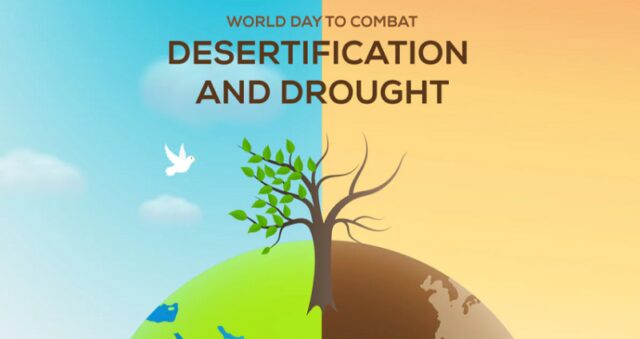Every year on June 17th, the world comes together to observe World Day to Combat Desertification and Drought (WDCDD). This significant day serves as a powerful call to action, raising awareness about the critical issues of desertification and drought, and their impact on the planet and its people. It emphasizes the need for sustainable land management and highlights the importance of international cooperation to find practical solutions that benefit both individuals and countries worldwide.
The Growing Threat of Desertification and Drought:
Desertification, the process of land degradation in arid, semi-arid, and dry sub-humid areas, is a growing threat affecting millions of hectares of land globally. Drought, a period of abnormally dry weather that negatively impacts hydrology, agriculture, and ecosystems, exacerbates desertification. These interconnected issues threaten food security, displace communities, and contribute to biodiversity loss.
A Historical Commitment: The UN and WDCDD
In recognition of the urgency of addressing these issues, the United Nations General Assembly established World Day to Combat Desertification and Drought in December 1994. This annual observance serves as a crucial reminder of the need for global cooperation. WDCDD highlights the link between unsustainable consumption patterns and land degradation, urging a shift towards more responsible practices.
Collective Action: Global Efforts and Initiatives
The observance of WDCDD is a catalyst for collective action. The United Nations, through the United Nations Convention to Combat Desertification (UNCCD), plays a central role in fostering international cooperation and support. The UNCCD works with governments, NGOs, and local communities to implement effective land management strategies and promote sustainable development practices.
Related Post: Goa Statehood Day 2024: A Celebration of Liberation and Rich Heritage
India’s Leadership in Land Restoration:
India stands as a shining example of global leadership in combating desertification and drought. The nation has set an ambitious target of restoring a staggering 26 million hectares of degraded land by 2030. India’s commitment extends beyond its borders; the country actively supports other developing nations in developing and implementing effective land restoration strategies. This collaborative approach exemplifies the importance of collective efforts in achieving Sustainable Development Goal (SDG) 15: Life on Land.
Achievable Solutions for a Sustainable Future:
Combating desertification and drought requires practical and achievable solutions that can be implemented at various levels. Here are some key strategies:
- Sustainable Land Management: Adopting practices that minimize soil erosion, enhance water retention capacity, and improve soil fertility is crucial for long-term land health.
- Afforestation and Reforestation: Planting trees and restoring forests play a vital role in preventing land degradation, maintaining ecological balance, and promoting biodiversity.
- Water Conservation: Implementing efficient irrigation techniques, rainwater harvesting systems, and promoting sustainable water management practices are essential to combat drought and ensure water security.
- Community Involvement: Encouraging local communities to actively participate in land restoration initiatives and adopt sustainable agricultural practices fosters ownership and ensures long-term success.
- Policy and Enforcement: Governments and international organizations have a crucial role to play in formulating and enforcing policies that promote sustainable land use and discourage practices that contribute to desertification.
Conclusion:
World Day to Combat Desertification and Drought serves as a powerful reminder that a healthy planet and a sustainable future for all depend on our ability to protect our land. By raising awareness, promoting practical solutions, and fostering international cooperation, we can work together to combat desertification and drought, restore degraded lands, and ensure a healthier, more sustainable future for generations to come.





